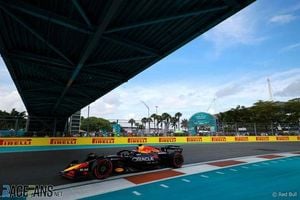Sony Interactive Entertainment has unveiled an exciting new development for its PlayStation VR2 headset, showcasing hand tracking technology during the SIGGRAPH Asia 2024 conference held recently in Tokyo. This announcement fulfills the hopes of many fans eager for enhanced interactivity and immersion within virtual reality (VR) experiences.
The demonstration provided viewers with their first glimpse of controller-free hand tracking capabilities. Attendees were treated to footage of participants engaging with a mini-game where they used hand gestures to clean virtual objects, effectively interacting with the game environment without the need for traditional controllers. Early impressions suggest the hand tracking system is both responsive and efficient, operating at 60 frames per second with minimal latency.
Details about the technology have been shared by Sony, stating the hand tracking feature utilizes advanced algorithms to monitor the position, posture, and velocity of the user's hands, alongside recognizing up to twelve distinct gestures. These features aim to transform the experience for players by allowing for more nuanced movements and realistic interactions. Importantly, this technology requires no additional hardware, relying solely on the capabilities of the existing PS VR2 setup.
Despite the hype surrounding the demo, the ambiguity of Sony's official stance on integrating hand tracking support within existing and future PSVR2 titles remains. Observers are left wondering whether developers can utilize this newly available toolkit alongside the latest PlayStation 5 SDK, effectively enhancing their current games or introducing innovative new experiences utilizing hand gestures.
The significance of hand tracking cannot be understated within the VR ecosystem. It has long been seen as a cornerstone feature by other competitors, like Meta with its Quest line. Many gamers feel hand tracking has greatly enhanced immersion and accessibility for users who find controllers cumbersome or intimidating. Since hand tracking has been standard for Meta Quest devices, the absence of similar functionality on the PSVR2 has been noted by many industry observers and fans alike.
This new development from Sony reflects its continued commitment to investing in VR technology. The PS VR2, which debuted to mixed reviews earlier this year, is now being recognized for its potential and for slowly rolling out features to retain the interest of both developers and gamers. Although initial excitement surrounding the PS VR2 saw high expectations, the subsequent lack of exclusive titles and substantial software support led to skepticism concerning the system's longevity.
It may come as a surprise to some, but this hand tracking feature was quietly rolled out through the SIGGRAPH Asia exposition rather than through major announcements or press releases – raising eyebrows about Sony's marketing approach. Many are questioning why such groundbreaking features are not being publicized more heavily, considering the rapid developments and growing consumer interest surrounding VR technology.
The PSVR2 has already seen several exciting features since its launch, including haptic feedback and eye-tracking capabilities. Hand tracking can be viewed as another step toward creating genuinely immersive and intuitive gaming experiences. Following the significant interest generated from the SIGGRAPH demonstration, it is hoped the company will soon clarify how this interaction method might integrate with current game libraries or upcoming titles.
Looking forward, the gaming community is eager to see how existing PSVR2 titles may receive updates incorporating hand tracking, as well as the potential for new titles to leverage this feature for unique gameplay mechanics. The ability for developers to port hand tracking technology from established platforms could prove beneficial, potentially enhancing the PSVR2's content library dramatically.
While many gaming enthusiasts remain cautiously optimistic, some expressed concern over the perceived lack of urgency from Sony toward prioritizing VR development. The PSVR2 reached consumers as a high-quality yet costly piece of hardware, and with continual reports of staff layoffs and budget cuts affecting dedicated VR studios, many feel the long-term viability of the headset is under threat.
But it is not all doom and gloom; there remains hope for the future of the PS VR2 and the broader virtual reality market. Implementing AI-driven technologies and anticipated advancements may lead to increased support for the headset from Sony, providing avenues for dynamic engagement and new gaming experiences.
So, as gamers keep their eyes peeled for announcements from Sony and developers alike, the horizon looks quite promising for players excited to explore the next wave of immersive hand-tracking gameplay. For now, the anticipation builds as everyone waits to see how this innovative technology will develop and shape the VR experience on PSVR2. Will the addition of hand tracking be enough to revive interest and encourage developers? Only time will tell, but one thing is clear: Sony appears to be slowly turning the tide on its investment and commitment to virtual reality gaming.



